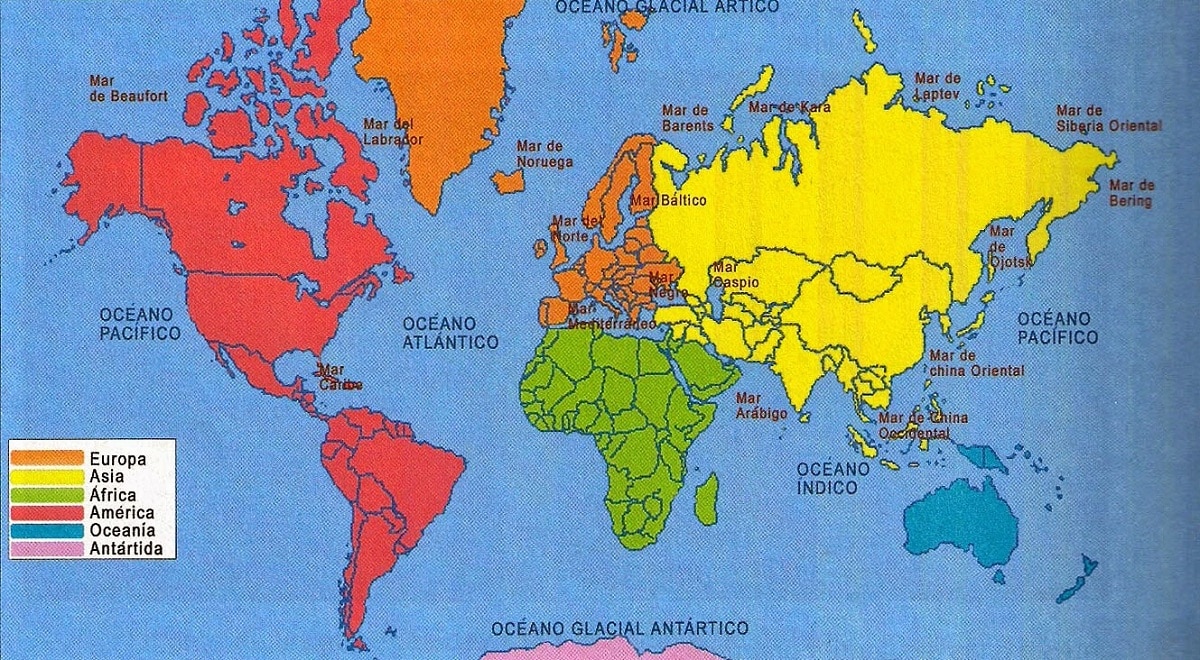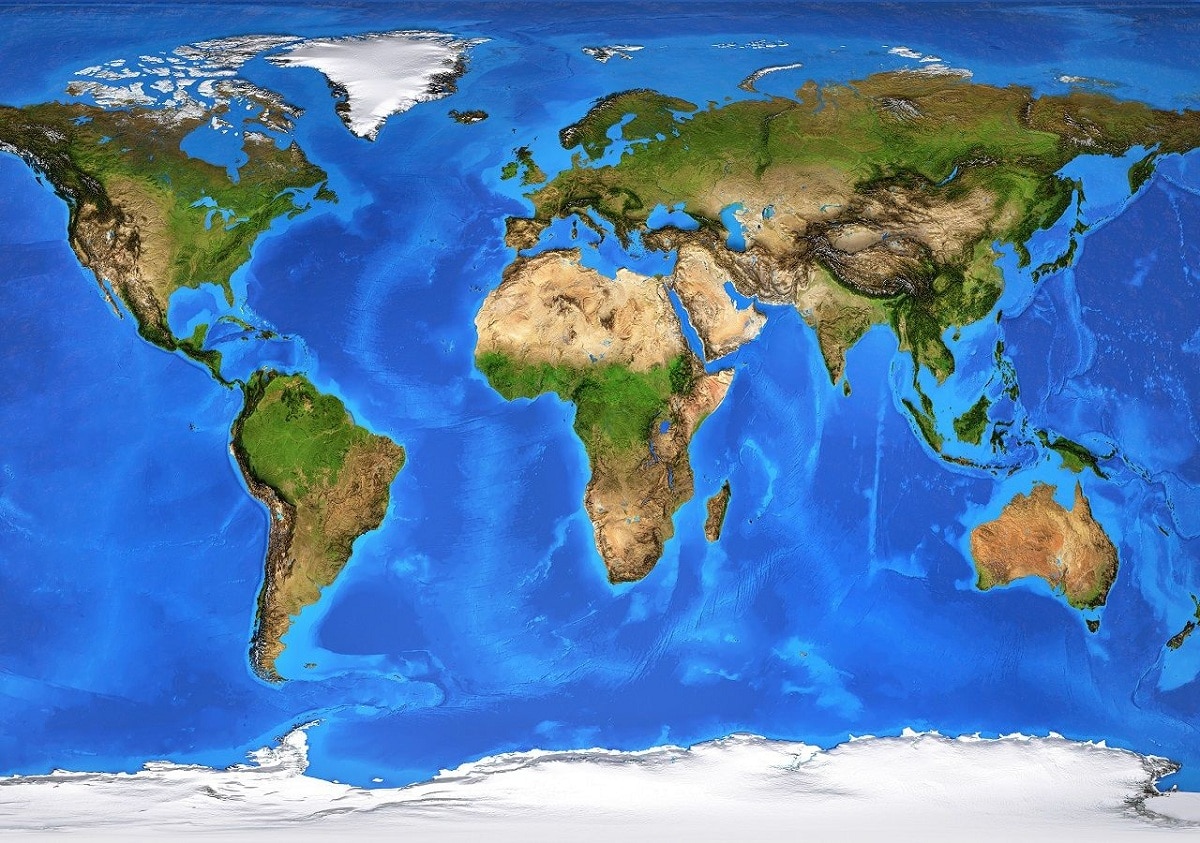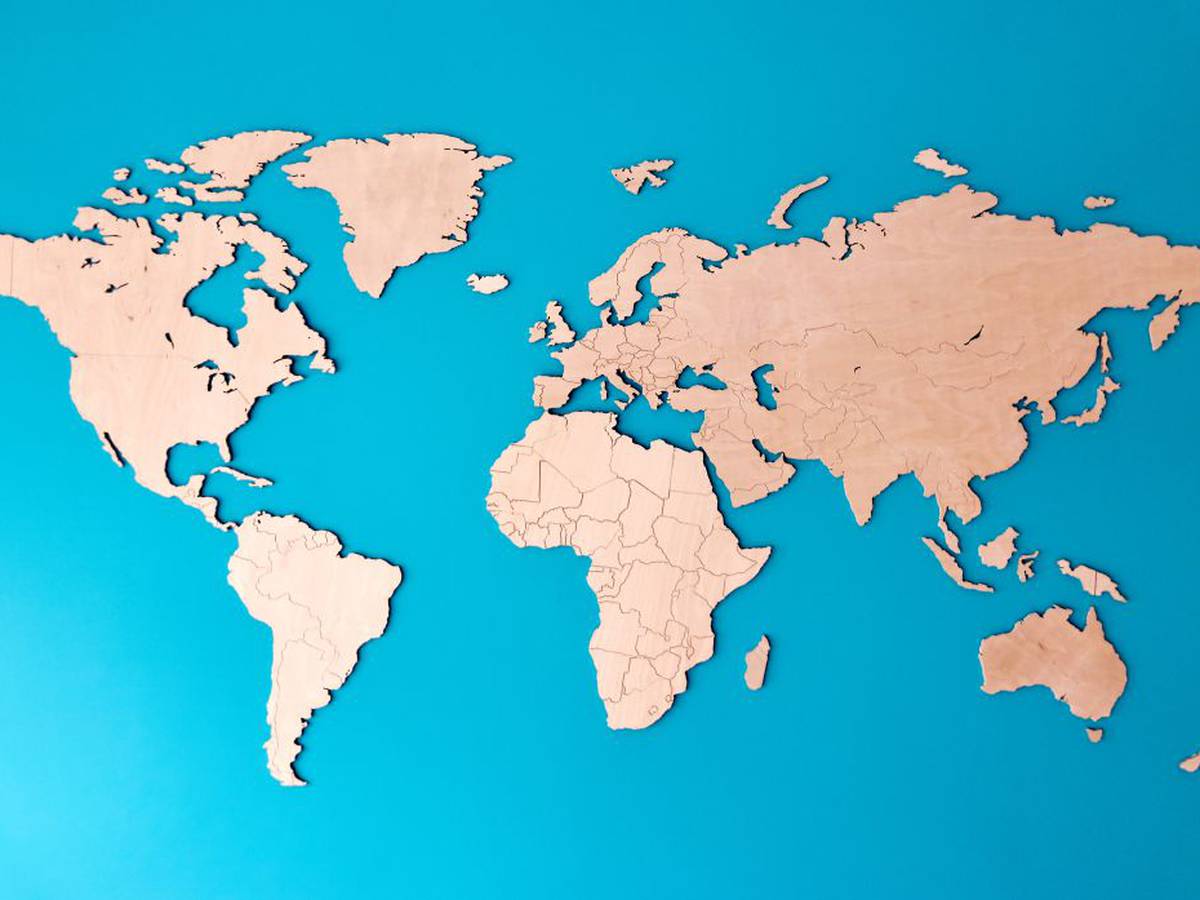
The terrestrial part of our planet is divided into various parts in order to establish larger surfaces. These parts are called continents. However, many people do not know what are the continents, what characteristics do they have and what are their importance.
For this reason, we are going to dedicate this article to telling you what the continents are, what their characteristics are, and everything related to geology.
what are the continents

When we speak of continents, we refer to large tracts of the earth's crust that emerge from the ocean, larger even than the largest islands.
The word continent comes from the Latin word continent, from continental terra or "continuous land". But the criteria to define what is or is not a continent are of a historical and cultural nature, so it has changed over time, just as it has changed, albeit over thousands of years of Earth's geological history. The location of the continents and the distance between them. In fact, in prehistoric times, all the continents formed into several supercontinents called Pangea, Panodia, etc.
Geographically, the continent is the world's great land organization, with islands more or less off the coast having a place on it.
The continents are formed by the cooling of the crust and are composed mainly of granite and associated rocks. unlike oceanic crust, which is dominated by basalt and gabbros. As their current form suggests, their initial appearance seems to have occurred in a very different way, as continental drift has continually moved, separated, reunited, and alienated them for millennia, altering the climate and visible appearance of the planet.
How many continents are there?

There is no single way to list the continents, as each continent model has its own take on it. Thus, there are models that identify 4, 5, 6 and 7 continents, the latter being the most recognized in English-speaking countries (Africa, Antarctica, South America, Asia, Europe, North America and Oceania); and 6 (unifying the United States); and in specific geological domains, 5 is accepted, more akin to tectonic plates (connecting Europe and Asia on the same continent, Eurasia).
More recently (2017), the theory suggested that there was also a continent called Zelandia, which would have been submerged in the waters of the Pacific Ocean thousands of years ago.
Africa
The "Black Continent", nicknamed the "Black Continent" due to the racial superiority of its population, is the original continent of humanity, the place where Homo sapiens first saw the world. The continent is connected to Asia by the Isthmus of Suez and separated from Europe by the Strait of Gibraltar and the Mediterranean Sea. Its ocean limits are: the Atlantic Ocean to the west and the Indian Ocean to the east. It has a total area of 30.272.922 square kilometers (20,4% of the world's emerging land) and is home to 15% of the world's population, with approximately 1.000 million inhabitants, spread over 54 countries.
America
Traditionally divided into three geographical regions: North, Central and South America, made up of 35 countries, this continent is called the "New World" because its existence in Asia and Europe was not known until the fifteenth century. It came from the hominids of Asia thousands of years after it was inhabited. Geographically, the Americas are bordered by the glacial Arctic Ocean to the north, separated from Antarctica by the Drake Passage to the south, and surrounded by the Atlantic and Pacific Oceans to the east and west, respectively. It is the second continent in the world with a total area of 43.316.000 square kilometers (equivalent to 30,2% of the exposed surface) and houses approximately 12% of the human population.
Asia
The largest and most populous continent in the world, with an area of almost 45 million square kilometers (more than 30% of the exposed surface) and 4.000 million inhabitants (69% of the world's population) spread over 49 countries, it is located in the eastern half of the northern hemisphere, bordered by the Arctic Ocean to the north, the Indian Ocean to the south, and the Pacific Ocean to the east. Although geographically a separate continent, it forms a single landmass with Europe and with which it once formed the Eurasian supercontinent. Asia is separated from Africa by the Isthmus of Suez, which includes a large number of islands between the Pacific and Indian oceans.
Europe

United to Asia in the same land mass, but geographically located in the north-central part of the Northern Hemisphere, is the European continent, which has a total area of 10.530.751 square kilometers (6,8% of the land area) and a population of 743.704.000 inhabitants (only 11% of the world population) Distributed in more than 50 countries. Europe is bordered by the Mediterranean Sea to the south, the Atlantic Ocean to the west, Asia and the Middle East to the east, and the Baltic Sea and the Arctic Ocean to the north. Despite its small size, Europe has played an important role in the destiny of humanity since classical antiquity, especially due to its doctrine of imperialism from the XNUMXth to the XNUMXth centuries.
Oceania
This island continent in the southeast of the southern hemisphere is the smallest at 9,008,458 square kilometers. However, it is home to approximately 40.117.432 inhabitants spread over 15 countries on the continental shelf (Australia) and smaller islands in the Pacific Ocean (New Zealand, New Guinea, Micronesia, Melanesia and Polynesia). It is bordered by the Indian Ocean to the west, the Pacific Ocean to the east, Antarctica to the south, and the South Asian islands to the north.
Antarctica
The southernmost continent on Earth is almost at the South Pole and has an area of 14.000.000 square kilometers, of which only 280.000 square kilometers are covered by ice in summer. As such, it was the last continent to be discovered and colonized by humans, it had no population of its own, it was visited by few scientists, soldiers and experts, no more than 5.000 people, spread over 60 bases in 30 different countries.
I hope that with this information you can learn more about what the continents are and what their characteristics are.